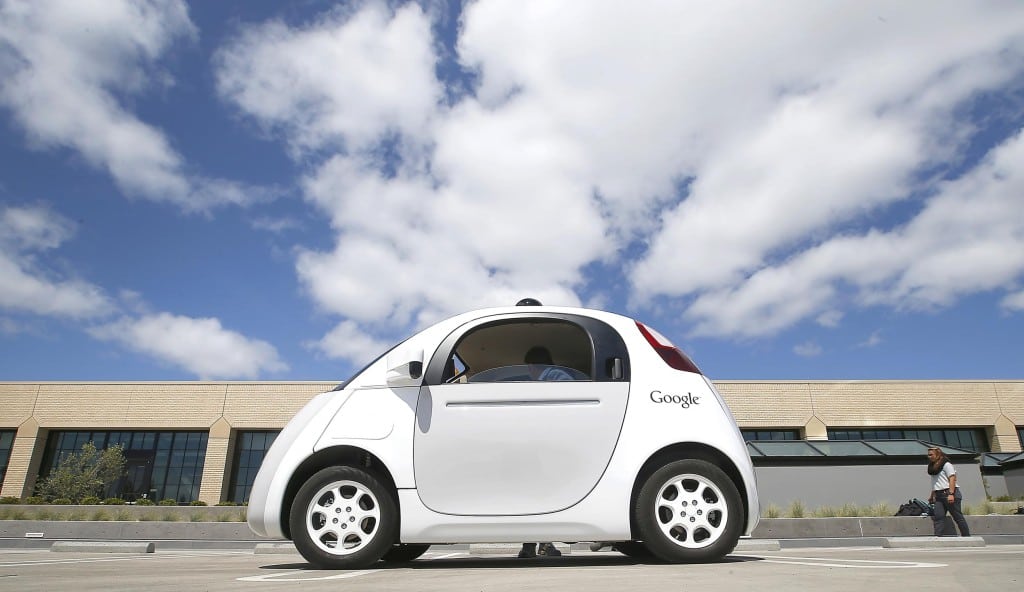Skift Take
Uber's newest rival could be one of its biggest investors.
Google Inc. plans to make its self-driving cars unit, which will offer rides for hire, a stand-alone business under the Alphabet Inc. corporate umbrella next year, a person briefed on the company’s strategy said.
Google’s autonomous vehicles have logged more than 1 million miles (1.6 million kilometers) on public roads, mostly around San Francisco and Austin, Texas, making these cities logical places for launching a service, said the person, who asked not to be identified because the plans are private. The fleets – which would include a range of large and small vehicles — could be deployed first in confined areas like college campuses, military bases or corporate office parks, the person said.
The race to develop a self-driving vehicle fleet has intensified since February when Bloomberg reported that Google was developing a rival to Uber Technologies Inc., most likely in conjunction with its driverless-car project. Uber is pursuing its own autonomous capabilities, while automakers are deploying semi-autonomous technologies and experimenting with so-called shared mobility.
By challenging ride-sharing pioneers like Uber and Lyft Inc., as well as traditional taxis, Google is providing the clearest indication yet how it plans to make money from self- driving automotive technologies that it began testing in 2009. Google spokeswoman Gina Scigliano declined to comment.
Self-Standing Business
In August, the Mountain View, California-based company reorganized itself into a conglomerate called Alphabet. The company said it plans to spin out several of its advanced- technology units into stand-alone companies within the Alphabet portfolio, including its robotics division, its health-care company Verily, the Google Ventures and Google Capital investment firms, and Google Inc., the search-engine company. The company’s self-driving car unit now resides in the research division called Google X.
In September, Google X hired John Krafcik, an auto-industry veteran, as chief executive officer of its cars project. Krafcik was then working as president of TrueCar Inc., the online auto- shopping service. He’d previously been a senior sales executive at Hyundai Motor Co. and a truck engineer at Ford Motor Co. He didn’t respond to an e-mailed request for comment.
When announcing Krafcik’s hiring in September, Google said it had no immediate plans to make self-driving cars a free-standing business unit, but that it was “a good candidate to become one at some point in the future.” Google executives have said they have no plans to mass-produce cars and trucks.
In the meantime, Uber is spending some of the more than $10 billion it has raised in private markets to develop self-driving cars. Uber has recruited dozens of autonomous-vehicle researchers from Carnegie Mellon University’s robotics program and in June hired Brian McClendon, Google’s former vice president of engineering, to run Uber’s Advanced Technologies Center. But Chief Executive Officer Travis Kalanick acknowledged at a conference in October that Google has the lead in developing a robot car.
Google executives have said they’re interested in self- driving cars primarily to reduce traffic accidents, which claim about 33,000 lives in the U.S. each year.
Google and Alphabet co-founder Sergey Brin suggested in September that self-driving cars could first appear in the form of a service, saying it would let a lot of people try the technology and that having “the vehicle come back to us every day” meant Google could rapidly update the machines.
–With assistance from Eric Newcomer and Brian Womack.
This article was written by John Lippert and Jack Clark from Bloomberg and was legally licensed through the NewsCred publisher network.
![]()
The Daily Newsletter
Our daily coverage of the global travel industry. Written by editors and analysts from across Skift’s brands.
Have a confidential tip for Skift? Get in touch
Tags: google, self-driving cars, uber
Photo credit: Google's self-driving prototype car is presented during a demonstration at the Google campus in Mountain View, Calif. Tony Avelar / Associated Press
